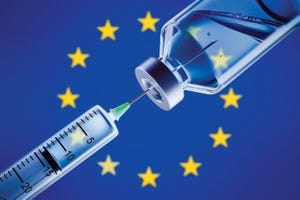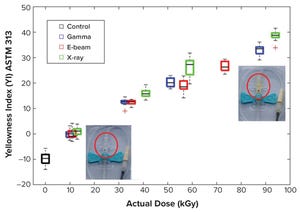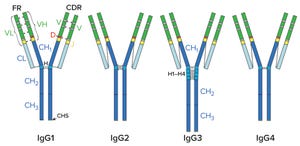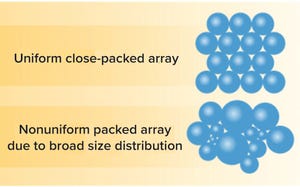As you receive this issue, Informa’s BPI West conference is taking place at the San Diego Convention Center on 14–17 March 2022, with live digital panel discussions the following week. People appear to be cautious but eager to get back to live-conference attendance. BPI’s senior technical editor, Cheryl Scott, will make the journey down there to represent us this year, so if you plan to be there, please take a moment to visit with her.
BPI West was the first of our conference series to suffer cancellation in March 2020 — and soon after that, quarantining began. Before then, my sense of time over the years had been influenced by the regularity of our conference schedule (e.g., if it’s March, it must be BPI West time). And I suspect that may be the case for many people who travel for business. Although we have learned how to meet efficiently and present online, and video conferencing is a useful form of communication, we have found that it is an unsatisfactory replacement for true human interaction.
As BPI...
HTTPS://STOCK.ADOBE.COM
When preparing an application for orphan drug designation (ODD) in the European Union (EU), you need to consider key eligibility criteria that are different from those required by the US Food and Drug Administration (FDA). One factor is justifying the “significant benefit” (defined below) of your drug product over existing therapies for an orphan condition. Significant benefit contributes considerably in securing a successful ODD application if the correct approach is taken — as described in two European Medicines Agency (EMA) publications in collaboration with the Committee for Orphan Medicinal Products (COMP) (
1, 2
). The COMP is in charge of reviewing applications for orphan designation.
Defining “Significant Benefit”
The EMA requires that three unique regulatory criteria be fulfilled by all applications for ODD status:
• The medicine must treat, prevent, or diagnose a disease that is life-threatening or chronically debilitating.
• The disease must affect no more than five in 1...
WWW.ISTOCKPHOTO.COM
Achieving efficient and profitable market access for next-generation pharmaceutical products is extremely challenging. The number of drug launches is rising every year, taking competition levels higher with them. And because these novel products tend to be more tightly targeted to smaller patient populations than the “blockbuster” drugs of old, their pricing/reimbursement terms need to be tailored to match. This is especially the case with highly complex biologic drugs, which typically are expensive to research and develop. Below I offer a five-point plan to help small and start-up companies cut through the associated market complexities.
In 2021, the number of innovative biopharmaceutical product launches was significantly higher than the number launched in 2020. In 2022, experts predict that the volume should rise again as part of a sharp upward trajectory between now and 2026 (
1
). Many of these exciting new products are developed by small players, which inevitably come up against ...
HTTPS://STOCK.ADOBE.COM
The COVID-19 pandemic has shone a light on restrictive business processes, information silos, and poor supply-chain visibility in many sectors. In biopharmaceutical manufacturing, for example, difficulties associated with product-quality management have been exposed and starkly felt.
However, public healthcare measures over the past 18 months have put physical distance between team members, thereby hampering the usual form-filling, manual sign-offs and spreadsheet-based recordkeeping associated with monitoring traditional manufacturing processes. In some cases, a lack of formal face-to-face discussions in the workplace that might have uncovered patterns of emerging problems have driven the need alternative means of problem solving. During the pandemic, the industry has been facing critical needs to implement effective monitoring, analysis, and reporting on product- and process-quality issues.
An Intelligent, Joined-Up View of Quality
Increased practical barriers to quality assuranc...
LFB Transgenic Goat
Antithrombin alfa is a recombinant human antithrombin developed as an anticoagulant treatment for people with hereditary antithrombin deficiency who are undergoing surgical or childbirth procedures (
1
). Marketed under the ATryn brand name by LFB SA (Les Ulis, France), antithrombin alfa was approved for use in adults by the US Food and Drug Administration (FDA) in February 2009 (
2
).
Antithrombin alfa is expressed in the milk of transgenic goats and purified through a multistep downstream process encompassing both filtration and chromatography. The source material (transgenic goat milk) naturally contains a microbiological load. To manage that, the collection process is controlled carefully, resulting in a historical average bioburden of 1,930 CFU/mL (
n
= 61) for pooled source material. Such a level is well below the prepasteurization standard for US grade-A cow’s milk of ≤100,000 CFU/mL (
3
). LFB’s ATryn clarification and purification process is designed to clear bacterial load r...
Ionizing-technology–based industries are growing rapidly around the world. The expansion is driven mostly by the technology’s myriad applications, including polymer crosslinking, medical device sterilization, food pasteurization, and phytosanitary treatment. Ionization also is used in the manufacture of some healthcare products such as medical devices and biopharmaceuticals. Industrial sterilization methods render single-use products and manufacturing components safe and ready for their intended use. ISO11137-1 describes the validation and routine control of a sterilization process for medical devices and mentions the three types of radiation considered under this scope: gamma, X-ray, and electron beam (e-beam) (
1
).
Figure 1:
Examples of X-ray and electron-beam installations; scan horns are present in both installations. Sources: Steri-Tek (left) and Texas A&M University (right).
The Changing Sterilization Market Landscape
The global market for medical plastics will grow at a predicted compound annual ...
High–molecular-weight (HMW) and low–molecular-weight (LMW) product variants are critical quality attributes (CQAs) for monoclonal antibodies (MAbs) because they can cause severe immunogenic responses in human recipients. Aggregation is a common problem that can compromise the quality, efficacy, and safety of therapeutic proteins. It can occur at different stages in a biomanufacturing process: during cell-culture–based production, downstream process purification, drug-substance formulation, and storage of bulk drug substances or formulated drug products. Hence, the removal and control of MAb aggregates and fragments are crucial in bioprocessing.
Aggregation can be caused by covalent and noncovalent interactions in a protein molecule. Covalent aggregation happens when two or more monomers bind together or when unfolded and/or partially unfolded MAbs present binding sites to one another. Disulfide bonds can form between free thiol (free sulfhydryl) groups on MAb structures, another common cause of covalent a...
Efficient and effective downstream processing of biopharmaceuticals reduces manufacturing costs and time. Chromatography is the primary purification method for traditional recombinant proteins, monoclonal antibodies (MAbs), plasmid DNA, and viral vectors. Although interest in membrane separation technologies is growing, traditional resin-based solutions continue to be preferred when high-resolution purification is required.
Ion-exchange chromatography (IEC)(e.g., cation and anion-exchange chemistries) and hydrophobic-interaction chromatography (HIC) are established bioseparation technologies. Cation-exchange resins are used widely for MAb polishing and aggregate clearance steps. Anion-exchange (AEX) resins are used for polishing viral vectors based on adenoassociated viruses (AAVs). Most plasmid DNA produced to support the manufacture of mRNA and viral vector vaccines and gene and gene-modified cell therapies are purified using HIC resins during a polishing step.
Over the past several decades, resin-based...
Process intensification (PI) describes an integrated framework of strategies to maximize the output of a unit operation, a process, or an entire facility. By implementing PI strategies, biomanufacturers can accomplish their productivity goals by increasing production speeds and titers, reducing facility footprints, and cutting costs. Overall, such changes improve production efficiency and flexibility.
Collectively, the biotherapeutic industry has made multiple advancements in intensifying upstream processing. PI strategies include using high-density cell banks, implementing seed-train intensification (
n
– 1 perfusion), and incorporating the principles of continuous manufacturing (with concentrated fed-batch production and dynamic perfusion technologies). Such intensification approaches deliver increased titers at the end of upstream process steps. However, manufacturers now reach a potential bottleneck in their intensification journey: handling higher masses and concentrations downstream.
Downstream Pro...
Puerto Rico is leading COVID-19 vaccination efforts in the United States, with 89.7% of adults already fully vaccinated (
1
). However, many other regions are struggling to gain that level of traction, if any. Less than 1% of people in developing countries are fully vaccinated (
2
). Because Pfizer–BioNTech’s and Moderna’s respective mRNA-based SARS-CoV-2 vaccines still require ultracold temperatures for long-term storage, vaccine distribution in remote locations is arduous without appropriate cold-chain infrastructure.
Puerto Rico’s success in vaccinating its population demonstrates how flexible ultracold solutions could mitigate many cold-chain inconsistencies in rural and underserved regions. When determining how to improve vaccination rates in such communities, we must examine both obstacles to access and strategies for improving cold-chain systems.
Cold-Chain Obstacles in Developing Nations
Remote communities in developing nations lack long-term solutions for receiving and storing vaccines. Inconsist...
Subscribe to receive our monthly print or digital publication
Join our 70,000+ readers. And yes, it's completely free.















